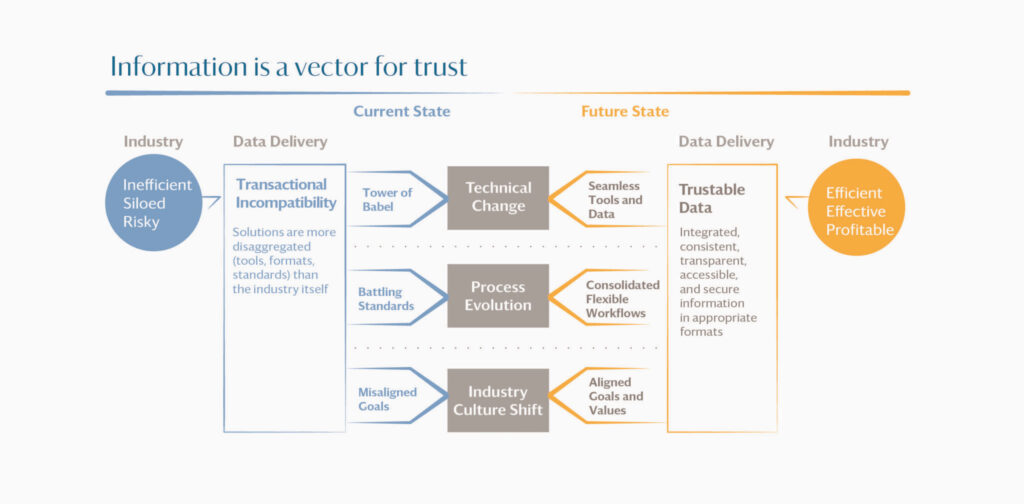How Technology can Drive Slave-Free Building

Based on a Project Delivery Workshops. Delivered by P. Bernstein and N. Alexander for Autodesk, Inc. 2019
To move the design and construction sector from a state of disaggregation and inefficiency to a state of efficient and ethical building, information systems that support project delivery must have trustable data that is integrated and transparent.
The disaggregate nature of the building supply chain, comprised of a loosely connected web of clients, design-ers, builders, and suppliers, is mirrored in the information infrastructure and technologies deployed in its service. Various digital tools and data flows are largely sub-op-timized for the exclusive use of each player, making a comprehensive view of supply chain dynamics very dif-ficult. These challenges are amplified by discontinuous project delivery systems, misaligned business processes designed to disabuse risk rather than manage it, and am-biguous lines of authority and responsibility for the impli-cations of the myriad decisions that coalesce to manifest a building.
Building industry processes are thus characterized by transactional incompatibility that makes supply chain transparency virtually impossible. Efforts by design and construction providers to fight slavery in the building ma-terials supply chain requires both a view through the supply chain itself and reliable and clear information available to each decision-maker along the development path of a project. Efforts to achieve this transparency, and thereby allow designers and builders to rely upon the accuracy and efficacy of information flowing from suppliers through contractors, can be catalyzed by a combination of dedica-tion to slave-free materials and improved, integrated tech-nologies that support the delivery of trustable data.
These opportunities fall into three categories, described in the following text: digital models that can be representational platforms to evaluate, simulate, and integrate responsible material decisions; design-to-construction integration that can more deeply connect design activity and related building through vertical connections from the design models to the project site; and big data and analytics that can provide the information surveillance infrastructure through which slave-free supply chains can be managed.